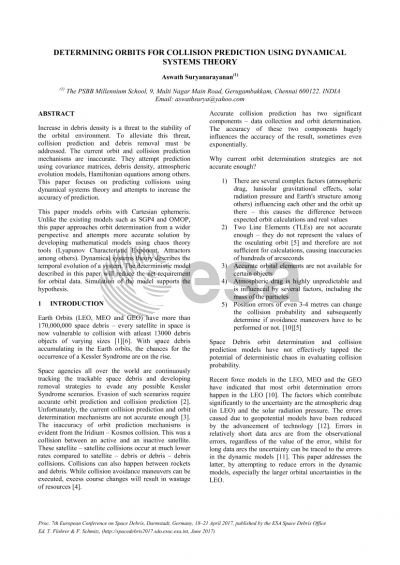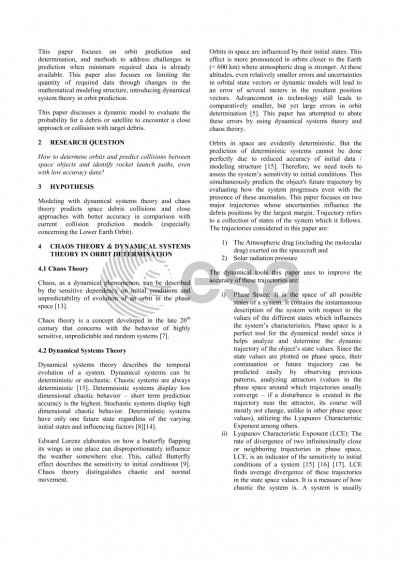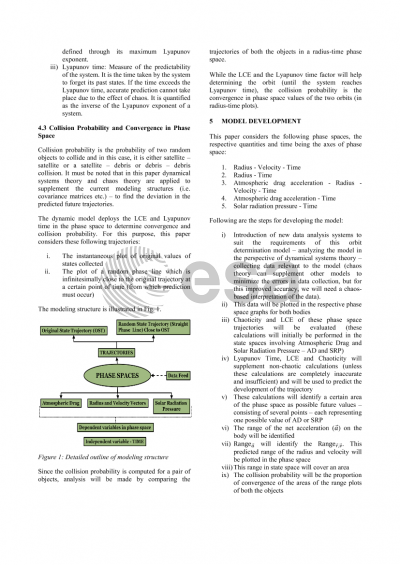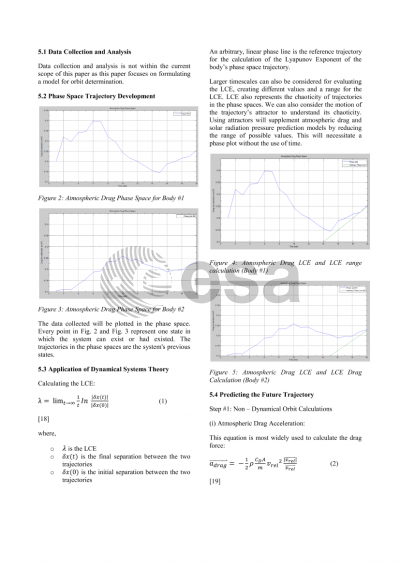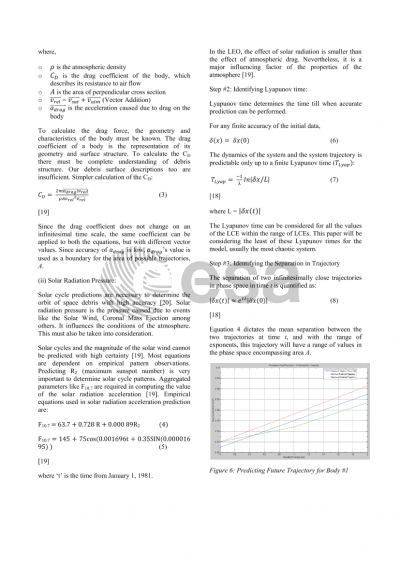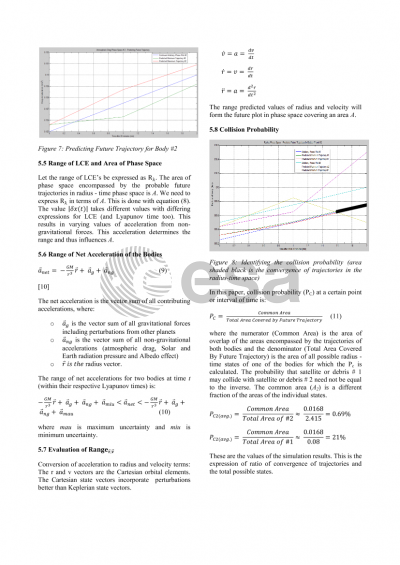Document details

Abstract
Space agencies all over the world are continuously tracking space debris, determining orbits and also developing removal strategies. Till date, orbit determination mechanisms have not been accurate enough. This is evident from the Iridium–Kosmos collision (February 2009). Accurate orbit prediction and collision prevention are essential to prevent the Kessler syndrome. However, while collision avoidance maneuvers are executed, excess course changes result in wastage of resources. Space agencies often have poor accuracy data making the situation worse.
How to determine orbits and predict collisions between space objects and identify rocket launch paths, even with low accuracy data?
Collision prediction has two components, accurate data collection and orbit determination. This paper focuses on using dynamical systems theory for orbit determination and collision prediction even with low accuracy data sets, making changes in the mathematical modeling structure.
To determine the orbits, mathematical modeling with Cartesian ephemeris was used to represent the state of the object at every instantaneous point with precision. Unlike the existing models such as SGP4 and OMOP, this paper approaches orbit determination from a wider perspective and attempts more accurate solution by developing mathematical models using dynamical systems theory. Dynamical systems theory describes the temporal evolution of a system. The orbital environment is a deterministic dynamic system. Modeling with dynamical systems theory and astrodynamics represents the nature of the orbital environment better than using only astrodynamics. The model uses the Lyapunov Characteristic xponent (LCE) to predict orbits. The LCE quantifies the divergence of trajectories in a phase space, the space of all possible states of a system. In the model, the phase space represents the orbital factors which determine the state of the system. Application of dynamical systems theory gives an indication of how chaotic the orbital system is and identifies the future state of the system provided a relationship between the LCE and the influencing factors is established.
In the model, LCEs have been put to use in finding the deviations in predicted values of future radius, velocity and atmospheric density in the phase space with respect to the true phase trajectory. Argumentation behind relation derivation was also inferred. The deterministic model has reduced the net requirement for data by clearly predicting the future states of the system. Simulations were conducted and results were analyzed. Collision probabilities were found to be supporting the hypothesis.
For orbit prediction, dynamical systems theory has necessitated the use of relevant real time space debris data, empirical relation derivation and accuracy analysis of the model. With the inclusion of chaos and dynamics in orbit prediction, total and accurate orbit determination can be achieved using this model. Non-linear dynamics (chaos) determines the sensitivity to initial conditions of any system. This has been put to use especially in weather prediction and stock markets for event prediction. Application of chaos for orbit determination is a novel approach by this paper.
Preview
